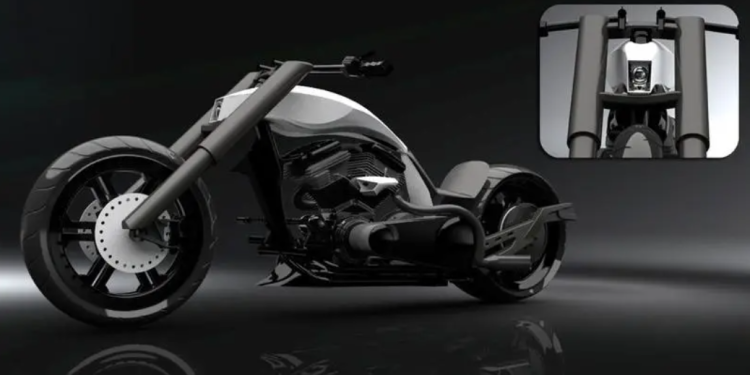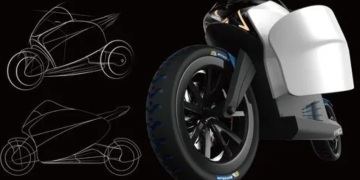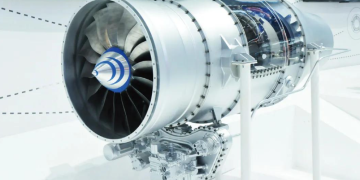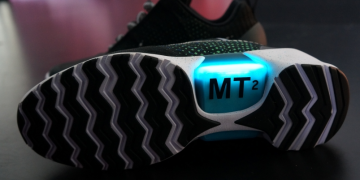In the realm of digital photography, understanding and harnessing the advanced features of your digital camera can elevate your creative output to new heights. Beyond basic point-and-shoot functionality, modern digital cameras offer a plethora of advanced settings and capabilities that empower photographers to express their artistic vision with precision and finesse. Let’s delve into the world of advanced features and unlock the full creative potential of your digital camera.
Introduction
As a photographer, understanding and utilizing the advanced features of your digital camera is paramount to unleashing your creative prowess. While mastering the basics is essential, exploring the advanced functionalities opens up a realm of possibilities for crafting unique and captivating images that leave a lasting impression. In this article, we’ll delve into the intricacies of advanced features, empowering you to push the boundaries of your creativity and achieve remarkable results.
Understanding Your Camera’s Capabilities
Before delving into the realm of advanced features, it’s crucial to familiarize yourself with your camera’s specifications and capabilities. Take the time to read the camera manual thoroughly and understand the various settings and functionalities at your disposal. Recognize that every camera has its unique strengths and limitations, and understanding these nuances is the first step towards unlocking its full creative potential.
Familiarizing Yourself with Your Camera’s Specifications
Begin by familiarizing yourself with key specifications such as sensor size, megapixel count, ISO range, and available shooting modes. Understanding these specifications will provide insight into your camera’s performance capabilities and help you make informed decisions when exploring advanced features.
Recognizing the Potential for Creativity Within Your Camera
While it’s easy to get caught up in the technical aspects of photography, it’s essential to remember that your camera is a tool for creative expression. Embrace experimentation and allow yourself to push the boundaries of conventional photography. Your camera is capable of capturing more than just images – it can convey emotions, evoke memories, and tell compelling stories through visual storytelling.
Exploring Advanced Shooting Modes
One of the fundamental aspects of mastering your digital camera’s advanced features is understanding the various shooting modes it offers. While automatic modes provide convenience and ease of use, manual and semi-automatic modes offer greater control over exposure and creative flexibility.
Understanding Manual Mode and Its Benefits
Manual mode grants you full control over exposure settings, including aperture, shutter speed, and ISO. By taking complete control of these parameters, you can achieve precise exposure and creative effects that may not be possible with automatic modes alone. Manual mode is particularly useful in situations where you need to maintain consistent exposure across multiple shots or when shooting in challenging lighting conditions.
Exploring Semi-Automatic Modes: Aperture Priority and Shutter Priority
Aperture priority and shutter priority modes offer a balance between manual control and automation, allowing you to prioritize either aperture or shutter speed while the camera adjusts the remaining settings accordingly. Aperture priority mode is ideal for controlling depth of field and achieving selective focus, while shutter priority mode is useful for capturing motion blur or freezing fast-moving subjects.
Mastering Exposure Control
Exposure control is fundamental to achieving well-exposed images, and understanding the exposure triangle – aperture, shutter speed, and ISO – is key to mastering your camera’s advanced features.
Understanding the Exposure Triangle: Aperture, Shutter Speed, and ISO
The exposure triangle dictates the relationship between aperture, shutter speed, and ISO, and how they affect the overall exposure of your images. Aperture controls the amount of light entering the camera, shutter speed determines the duration of exposure, and ISO regulates the camera’s sensitivity to light. By mastering the interplay between these three factors, you can achieve optimal exposure in any lighting situation.
Leveraging Exposure Compensation for Fine-Tuning
Exposure compensation allows you to adjust the camera’s exposure settings manually to compensate for challenging lighting conditions or achieve a specific creative effect. By dialing in positive or negative exposure compensation, you can brighten or darken your images to achieve the desired result without having to switch to manual mode.
Harnessing the Power of Autofocus Systems
Autofocus systems play a crucial role in achieving sharp, well-focused images, and understanding the different autofocus modes and settings can significantly impact the quality of your photographs.
Understanding Different Autofocus Modes and Their Applications
Most digital cameras offer a variety of autofocus modes, including single-shot AF, continuous AF, and automatic AF selection. Each mode is designed for specific shooting scenarios, such as still subjects, moving subjects, or a combination of both. Experiment with different autofocus modes to determine which one works best for your preferred style of photography.
Utilizing Autofocus Points for Precise Focusing
Autofocus points allow you to select specific areas within the frame for the camera to focus on, giving you greater control over the composition and depth of field of your images. By selecting the appropriate autofocus points and adjusting the focus area manually, you can ensure that your subject is tack-sharp and well-defined, even in challenging shooting conditions.
Unlocking Creative Control with White Balance
White balance plays a crucial role in determining the overall color tone and mood of your images, and understanding how to manipulate it can greatly enhance your creative output.
Understanding the Impact of White Balance on Image Mood and Tone
White balance refers to the color temperature of light, which can vary depending on the time of day, weather conditions, and light source. Different white balance settings produce different color temperatures, ranging from warm (e.g., sunrise or incandescent light) to cool (e.g., overcast skies or fluorescent light), each of which imparts a unique mood and tone to your images.
Exploring Custom White Balance Settings for Accurate Color Reproduction
While most cameras offer preset white balance settings such as daylight, cloudy, and tungsten, you can achieve more precise color reproduction by setting a custom white balance based on the specific lighting conditions of your scene. Use a white or neutral gray card to calibrate the camera’s white balance manually and ensure accurate color representation in your images.
Utilizing Built-in Filters and Effects
Many digital cameras come equipped with built-in creative filters and effects that allow you to add artistic flair to your images without the need for post-processing software.
Exploring In-Camera Creative Filters and Effects
From black and white and sepia tones to miniature and toy camera effects, built-in creative filters and effects offer a quick and easy way to enhance your images and experiment with different artistic styles. Explore the available options on your camera and experiment with different combinations to find the ones that best suit your creative vision.
Understanding When and How to Use Built-in Filters Effectively
While creative filters and effects can add visual interest to your images, it’s essential to use them judiciously and with purpose. Consider the subject matter and context of your images and choose filters and effects that complement the mood and narrative you wish to convey. Remember that less is often more, and subtlety can be more effective than heavy-handed processing.
Diving into Advanced Metering Modes
Metering modes determine how your camera measures and evaluates light when determining exposure, and understanding their nuances can help you achieve accurate exposures in a variety of lighting conditions.
Understanding Evaluative, Spot, and Center-Weighted Metering Modes
Most digital cameras offer a range of metering modes, including evaluative (matrix), spot, and center-weighted metering. Evaluative metering considers the entire scene when determining exposure, spot metering measures light from a small area in the frame, and center-weighted metering prioritizes the central portion of the frame. Experiment with different metering modes to determine which one works best for your shooting style and subject matter.
Utilizing Metering Modes to Achieve Accurate Exposures in Challenging Lighting Conditions
Metering modes play a crucial role in achieving accurate exposures, particularly in challenging lighting conditions such as high contrast or backlit scenes. By understanding how different metering modes interpret light and shadow, you can adjust exposure settings accordingly to ensure that your subject is properly exposed and details are retained in both highlight and shadow areas.
Mastering Long Exposure Photography
Long exposure photography is a versatile technique that allows you to capture dynamic and visually striking images by extending the duration of exposure beyond the conventional limits.
Understanding the Principles of Long Exposure Photography
Long exposure photography involves using slow shutter speeds to capture motion blur or create light trails, resulting in surreal and atmospheric images. Common subjects for long exposure photography include flowing water, moving clouds, and nighttime cityscapes, but the technique can be applied creatively to a wide range of subjects and scenarios.
Tips and Techniques for Capturing Stunning Long Exposure Images
Achieving successful long exposure images requires careful planning and execution, as well as an understanding of the technical aspects involved. Use a sturdy tripod to stabilize your camera and prevent camera shake, and use a remote shutter release or self-timer to minimize vibrations during exposure. Experiment with different shutter speeds and apertures to achieve the desired effect, and consider using neutral density filters to reduce the amount of light entering the camera and extend exposure times further.
Exploring High Dynamic Range (HDR) Imaging
High Dynamic Range (HDR) imaging is a powerful technique for capturing scenes with a wide range of brightness levels and preserving detail in both highlight and shadow areas.
Understanding the Concept of HDR Imaging
HDR imaging involves capturing multiple exposures of the same scene at different exposure levels and combining them into a single composite image using specialized software. By blending exposures, HDR imaging allows you to overcome the limitations of dynamic range inherent in digital cameras and capture scenes with extreme contrast accurately.
Leveraging HDR Techniques for Capturing Scenes with High Contrast
HDR imaging is particularly useful in situations where the scene contains both bright highlights and deep shadows, such as landscapes with bright skies and shadowed foregrounds or interior spaces with bright windows and dimly lit interiors. By capturing multiple exposures and blending them into an HDR composite, you can retain detail and tonal gradation throughout the image, resulting in a more balanced and visually appealing final result.
Utilizing Bracketing for Exposure Fusion
Exposure bracketing is a technique that involves capturing multiple exposures of the same scene at different exposure levels, allowing you to blend them together to achieve optimal exposure and dynamic range.
Understanding Exposure Bracketing and Its Benefits
Exposure bracketing allows you to hedge your bets by capturing multiple exposures of the same scene at varying exposure levels, ensuring that you capture detail in both highlight and shadow areas. By bracketing exposures, you can minimize the risk of blown highlights or lost shadow detail and increase the likelihood of achieving a well-exposed image in challenging lighting conditions.
Utilizing Exposure Bracketing for Exposure Fusion and HDR Imaging
Exposure bracketing is a valuable technique for both exposure fusion and HDR imaging, as it provides the necessary source material for blending multiple exposures together seamlessly. By bracketing exposures and blending them using specialized software, you can create stunning composite images that exhibit a wide dynamic range and tonal gradation while retaining detail and clarity throughout the scene.
Experimenting with Multiple Exposure Photography
Multiple exposure photography is a creative technique that involves combining two or more images into a single composite image, allowing you to create unique and visually compelling effects.
Understanding the Creative Potential of Multiple Exposure Photography
Multiple exposure photography allows you to blend images together in-camera to create double exposures, overlay textures or patterns, or merge elements from different scenes into a single composition. By experimenting with multiple exposure techniques, you can unleash your creativity and produce images that are truly one-of-a-kind.
Techniques for Blending Multiple Exposures to Create Artistic Effects
Experiment with different blending modes and opacity settings to achieve the desired effect when blending multiple exposures together. Consider the visual impact of combining different elements and experiment with different compositions and arrangements to create visually striking and thought-provoking images.
Exploring Time-Lapse Photography
Time-lapse photography is a mesmerizing technique that involves capturing a series of still images at set intervals and combining them into a seamless video sequence, allowing you to compress time and capture the passage of time in a visually captivating way.
Understanding the Fundamentals of Time-Lapse Photography
Time-lapse photography involves setting up your camera to capture a series of still images at predetermined intervals over an extended period, such as hours or days. Once captured, the images are combined into a video sequence using specialized software, resulting in a fast-paced, condensed portrayal of time passing.
Tips and Techniques for Capturing Captivating Time-Lapse Sequences
Achieving successful time-lapse sequences requires careful planning and execution, as well as an understanding of the technical aspects involved. Use a sturdy tripod to stabilize your camera and ensure consistent framing throughout the sequence, and use an intervalometer or built-in time-lapse function to automate the shooting process. Experiment with different intervals and durations to capture the desired level of motion and activity, and consider factors such as composition, lighting, and subject movement when planning your time-lapse sequences.
Pushing Boundaries with Focus Stacking
Focus stacking is a technique that involves capturing multiple images of the same scene at different focus distances and combining them into a single composite image with extended depth of field.
Understanding Focus Stacking and Its Applications
Focus stacking allows you to overcome the limitations of depth of field inherent in digital photography by capturing multiple images at varying focus distances and combining them into a single composite image. By blending focused areas from each image, focus stacking extends the depth of field and ensures that both near and distant elements in the scene are sharp and in focus.
Techniques for Combining Multiple Images to Achieve Maximum Depth of Field
To create a focus-stacked image, start by capturing a series of images of the same scene at different focus distances, ensuring that each image overlaps slightly with the next. Once captured, use specialized focus stacking software to align and blend the images together seamlessly, resulting in a final composite image with extended depth of field. Experiment with different focus distances and aperture settings to achieve the desired level of sharpness and clarity throughout the scene.
Conclusion
Unlocking the creative potential of your digital camera is a journey of exploration and experimentation, but with patience, practice, and perseverance, you can take your photography to new heights. By understanding and harnessing the advanced features of your camera, you can push the boundaries of your creativity and capture images that resonate with emotion, depth, and visual impact. Embrace the challenges and opportunities that advanced features present, and let your imagination be your guide as you embark on your photographic journey.
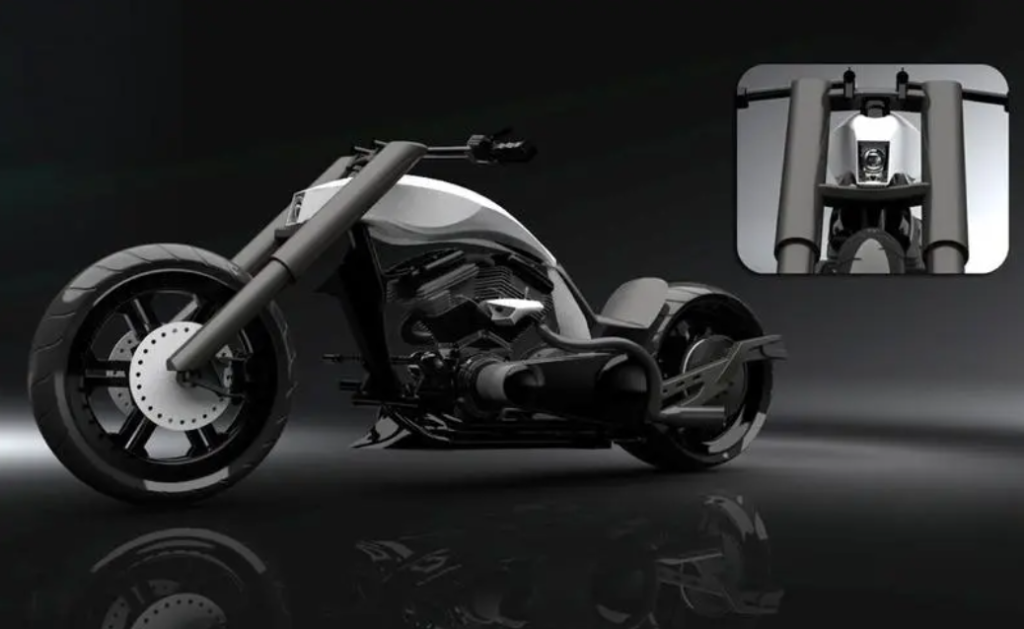
FAQs After The Conclusion
- How do I know if my camera has advanced features? Most modern digital cameras come equipped with a range of advanced features and settings, including manual exposure control, autofocus customization, and creative shooting modes. Consult your camera manual or manufacturer’s website for detailed information about the capabilities of your specific camera model.
- What are some common advanced features found in digital cameras? Common advanced features found in digital cameras include manual exposure modes (e.g., manual, aperture priority, shutter priority), advanced autofocus systems with customizable settings, in-camera creative filters and effects, and specialized shooting modes (e.g., long exposure, HDR, time-lapse).
- How can I learn to use the advanced features of my camera effectively? Familiarize yourself with your camera’s manual and experiment with different settings and features in various shooting scenarios. Practice using advanced features such as manual exposure control, autofocus customization, and creative shooting modes to gain confidence and proficiency over time.
- What are some benefits of using advanced features in photography? Using advanced features in photography allows you to exercise greater creative control over your images, achieve more precise exposure and focus, and explore new techniques and shooting styles. Advanced features also enable you to push the boundaries of conventional photography and express your unique artistic vision.
- Are there any drawbacks to using advanced features in photography? While advanced features offer greater flexibility and creative control, they may also increase the complexity of your camera’s operation and require additional time and effort to master. Additionally, some advanced features may consume more battery power or storage space, so it’s essential to plan accordingly when shooting.
- What should I do if I encounter difficulties when using advanced features? If you encounter difficulties when using advanced features, consult your camera manual or online resources for troubleshooting tips and guidance. Reach out to fellow photographers or online communities for advice and support, and don’t hesitate to experiment and practice to improve your skills over time.
- How can I incorporate advanced features into my photography workflow? Incorporate advanced features into your photography workflow by identifying specific techniques or effects you wish to achieve and experimenting with different settings and parameters to accomplish your goals. Practice using advanced features in various shooting scenarios to develop your skills and expand your creative repertoire.
- Are there any limitations to what I can achieve with advanced features in my camera? While advanced features offer a wide range of creative possibilities, they are not a substitute for artistic vision and technical proficiency. Understanding the fundamentals of photography, such as composition, lighting, and storytelling, is essential for creating compelling images, regardless of the advanced features available in your camera.



